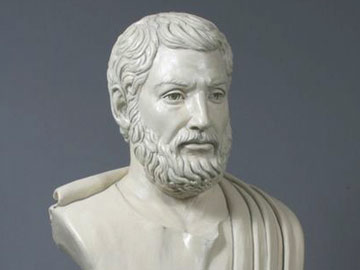During the 1st century AD, Nero burnt the canal while Hadrian was interested in constructing an aqueduct and Herodes Atticus in embellishing the Agora of Corinth and the sanctuary of Poseidon. An early Christian community was created in Corinth and around its ports and this resulted in the construction of several religious buildings such as Basilicas, especially at the ports.
During the 3rd century AD, Corinth had become a wealthy centre of the Roman state consequently it attracted a large number of Barbarians who invaded in the Roman prefectures. Justinian, in the 6th century AD, took care of the safety of Corinth and he built the Hexamilion Wall (six-mile wall) across the canal, which guarded the land path from the mainland to Peloponese. However he destroyed a lot of pre-Christian buildings in order to erase this wall, including Poseidon’s sanctuary. In any case, the functionality of the Hexamilion Wall was really ambiguous.
Sikion – Nemea – Kleones
Sikion was one of the most important cities of ancient Corinthia district. It was affected more than ancient Corinth by Agamemnon’s reign and pre-Dorians Argolis. The king Adrastos who was made to quit Argos, has resorted in Sikion where he reigned. Later on he had been being honored like a hero in Sikion until Cleisthenes, a local archon who hostiled the Argians, banned any kind of honors to Adrastos.
Sikion was located within a fertile valley and its progress reached its peak at the same tame as Corinth did (7th-6th century BC).
The ancestors of Pericles

Cleisthenes
The politicians who ruled the town, during that period, came from the aristocratic family of the Orthagorides. The most famous of them was Cleisthenes whose daughter, Agariasti, got married to Alcmeonides Megacles from Athens. They gave birth to Cleisthenes, the famous reformer of Athens. What is more, Pericles came from the same family too.
The bloom of Sikion lasted during the beginning of the 5th century BC. During the Peloponnesian War, Sikion was on Sparta’s side. Even though it was tried to establish democracy in Sikion, there was almost no effective results.
Sikion was ruled by Oligarchies and Tyrannies during the 4th and the 3rd centuries BC. The power was taken over by Demetrius the Besieger who, after the habitants’ approval on that, settled the new town at the upland where the Vasiliko village is located presently.
This lead many Sikionians to quit the valley even though the settlement by the port remained there and it kept being an important inhabited place. The new city had been being ruled by tyrants who eliminated their opponents, by the time Aratos came into power (251 BC) and, later, set the city free and let her join the alliance.
The impact of Argos on Kleones and Nemea
Nemea and Kleones were located close to Argos thus had been made to have the same interests as Argos. The sanctuary of Nemea was within the territory of Kleones and Kleonians used to organize the Pan-Hellenic Games there. Later, it was the Argians who took control over the Games.
